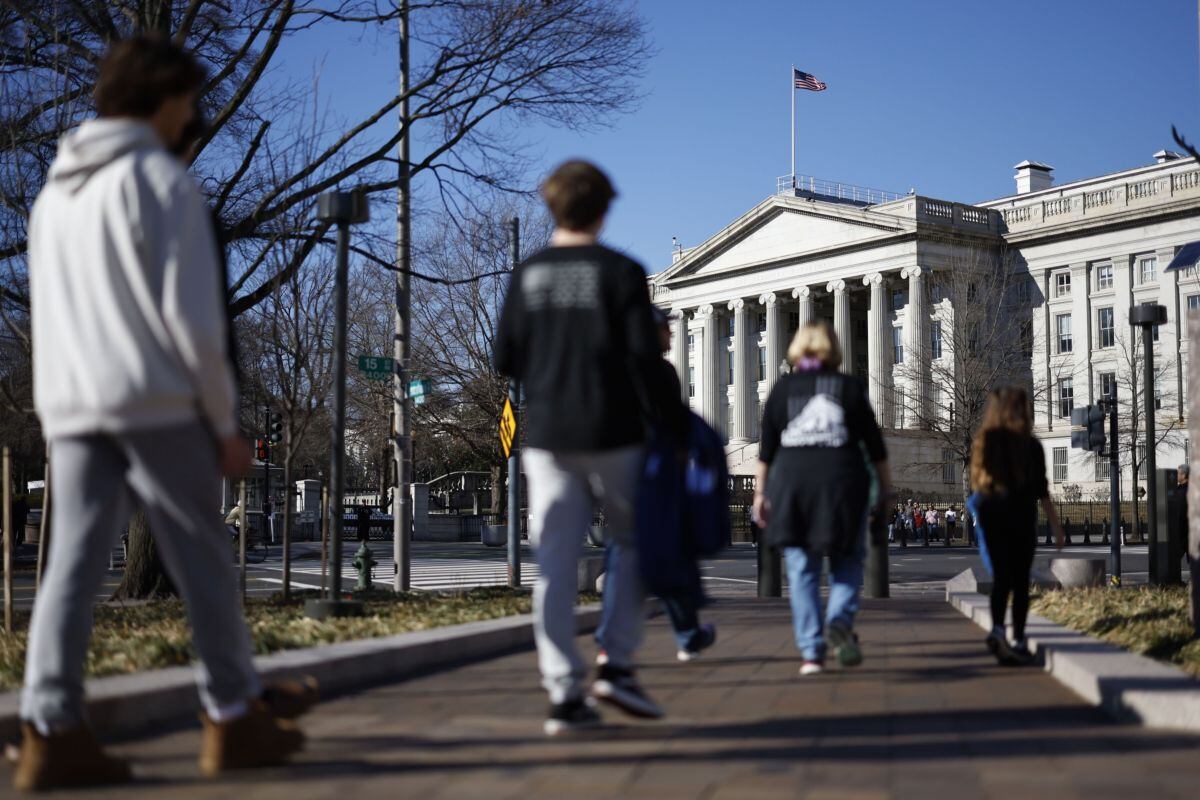
The authorities of the Federal Reservewho have timidly accepted the possibility of crushing the inflation without a recession, meet this week in the middle of a automobile industry workers strikea possible shutdown of the federal government and payments of student loans that pose new risks to consumers.
The United Auto Workers union began a strike against the three major automakers on Friday, with an initial walkout of about 13,000 employees at three plants, but those numbers could increase.
Elected federal officials only have until September 30, when current spending authorizations expire, to reach an agreement or the agencies will have to close.
Student loan repayments resume in October after a three-year suspension during the COVID-19 pandemic.
In isolation, none of these measures are likely to change policymakers’ perception of near-term risks or focus on quelling inflation, which remains high.
However, with the economy already expected to slow in the final months of the year, prolonged disruptions in the auto industry and federal agencies could have unpredictable results, such as slowing consumer spending or driving up car prices. cars.
This would deal a setback in the Fed’s fight against inflation and could deliver the kind of blow to business and consumer confidence that could mean the difference between a “soft landing” and a recession.
In October, millions of consumers will face renewed student loan payments, diverting them from other expenses.
This caused Goldman Sachs economists to temper their generally optimistic outlook, warning of a “bump” in the fourth quarter that could subtract more than a percentage point from the growth of the Gross Domestic Product.
Vincent Reinhart, chief economist at Dreyfus and Mellon and former head of the Fed’s monetary policy division, said that with aggressive rate hikes still underway, banks tightening credit and consumers reaching the end of the pandemic era savings, it may not take much to throw the economy off course.
As an added risk, he noted that the Fed’s balance sheet reduction is reaching levels that could unexpectedly tighten financial conditions.
“Recession occurs due to impacts related to the vulnerability of the economy. “If you arrive late to a tightening cycle, the fund rate is restrictive, the buffers have been reduced, then you are more vulnerable,” said. “These types of events would have been ruled out a year ago.”
With the Fed already expected to keep the policy rate between 5.25% and 5.5% at its meeting on September 19-20, any emerging risks may do little more than change the atmosphere and language around the meeting.
Still, central bankers have offered little guidance on upcoming decisions. They are likely nearing the end of the rate hikes they began in March 2022 to fend off high inflation, but they are not prepared to say with certainty that they have peaked or to indicate when they might be cut, in part because they are divided on the next steps.
In recent months, economic data has generally played in the Fed’s favor, with inflation falling even though the economy continues to grow above trend and add a good number of jobs each month.
However, the shutdown of two important sectors – with 146,000 auto workers on strike and 800,000 federal employees without pay – would undermine growth and confidence with each passing week.
Analysts fear it will set the stage for persistent conflicts on both fronts.
According to Michael Pearce of Oxford Economics, “The unique circumstances of this time mean that any impact of the strike could be particularly damaging,” as supply chains remain tangled by the pandemic and negotiation is expected to be intense as workers try to regain lost ground to inflation amid record industry profits.
Source: Reuters
Source: Gestion
Ricardo is a renowned author and journalist, known for his exceptional writing on top-news stories. He currently works as a writer at the 247 News Agency, where he is known for his ability to deliver breaking news and insightful analysis on the most pressing issues of the day.











